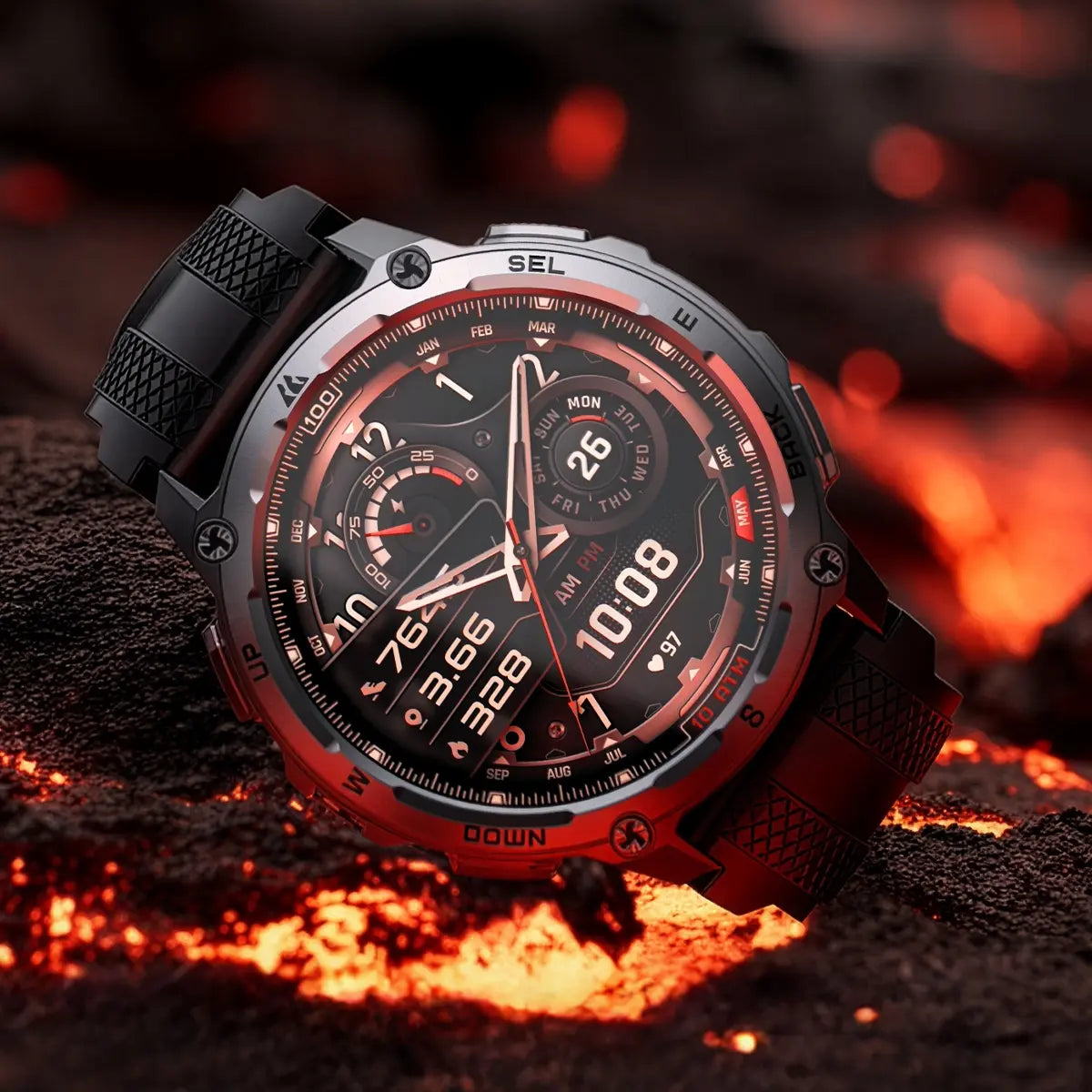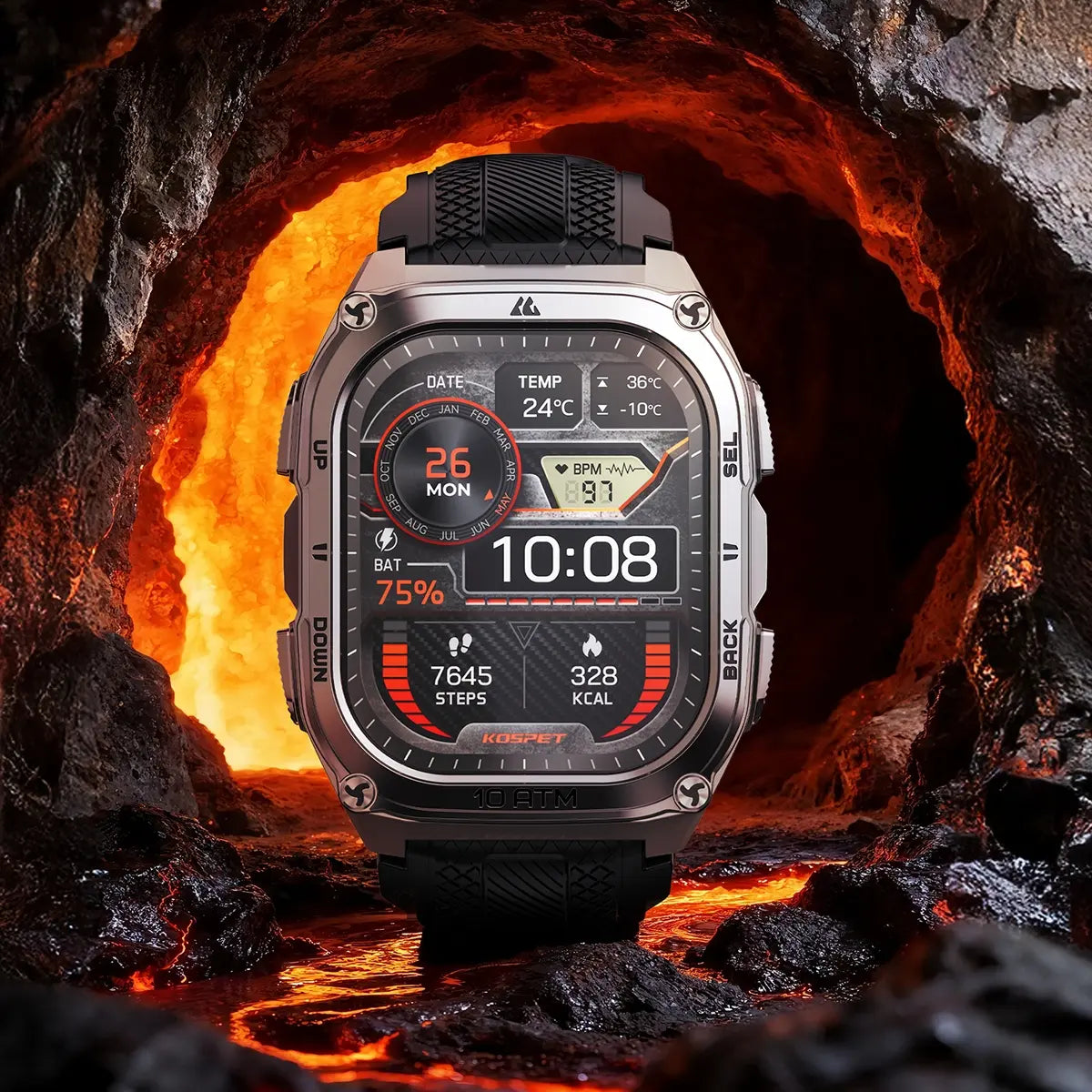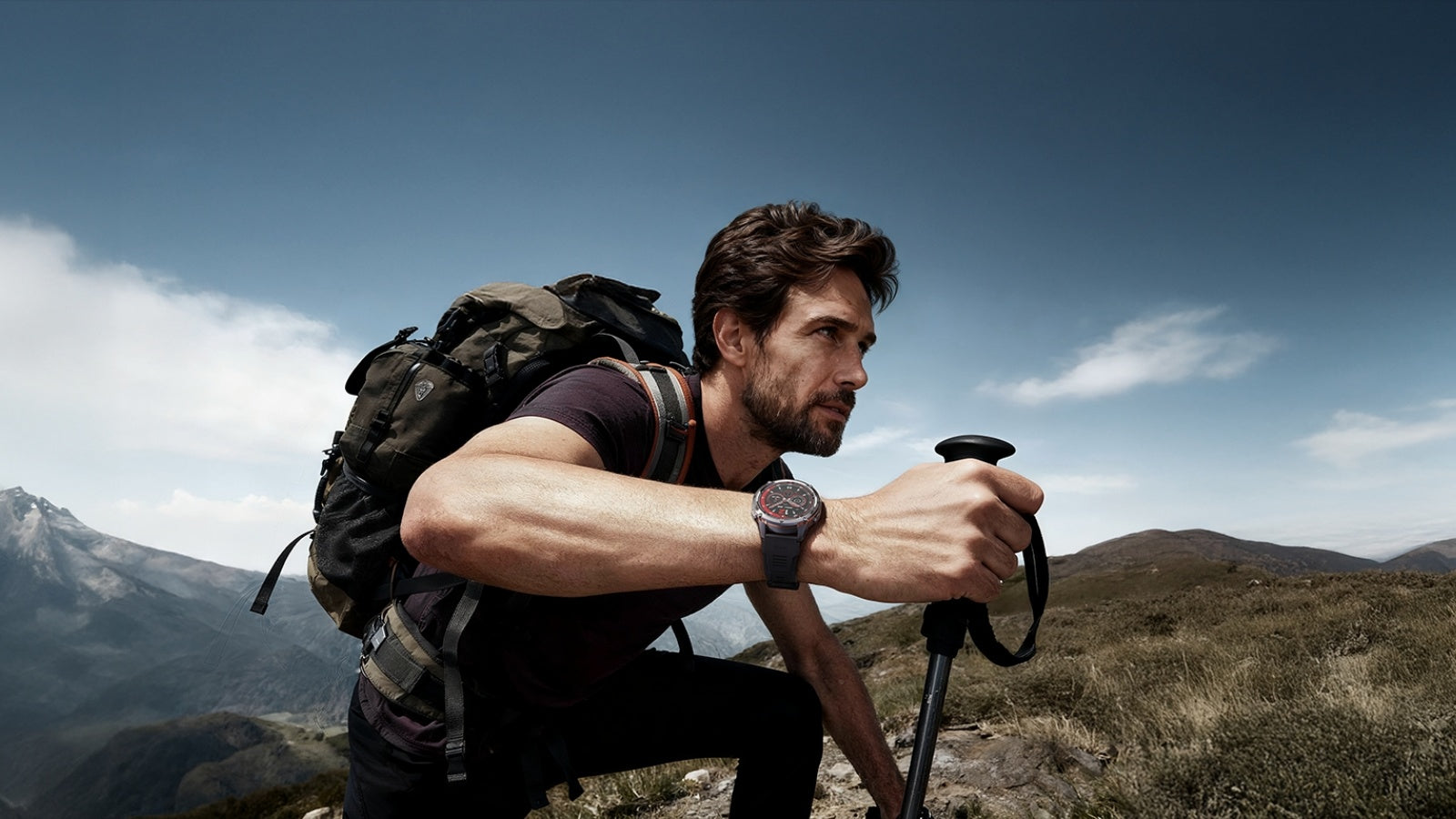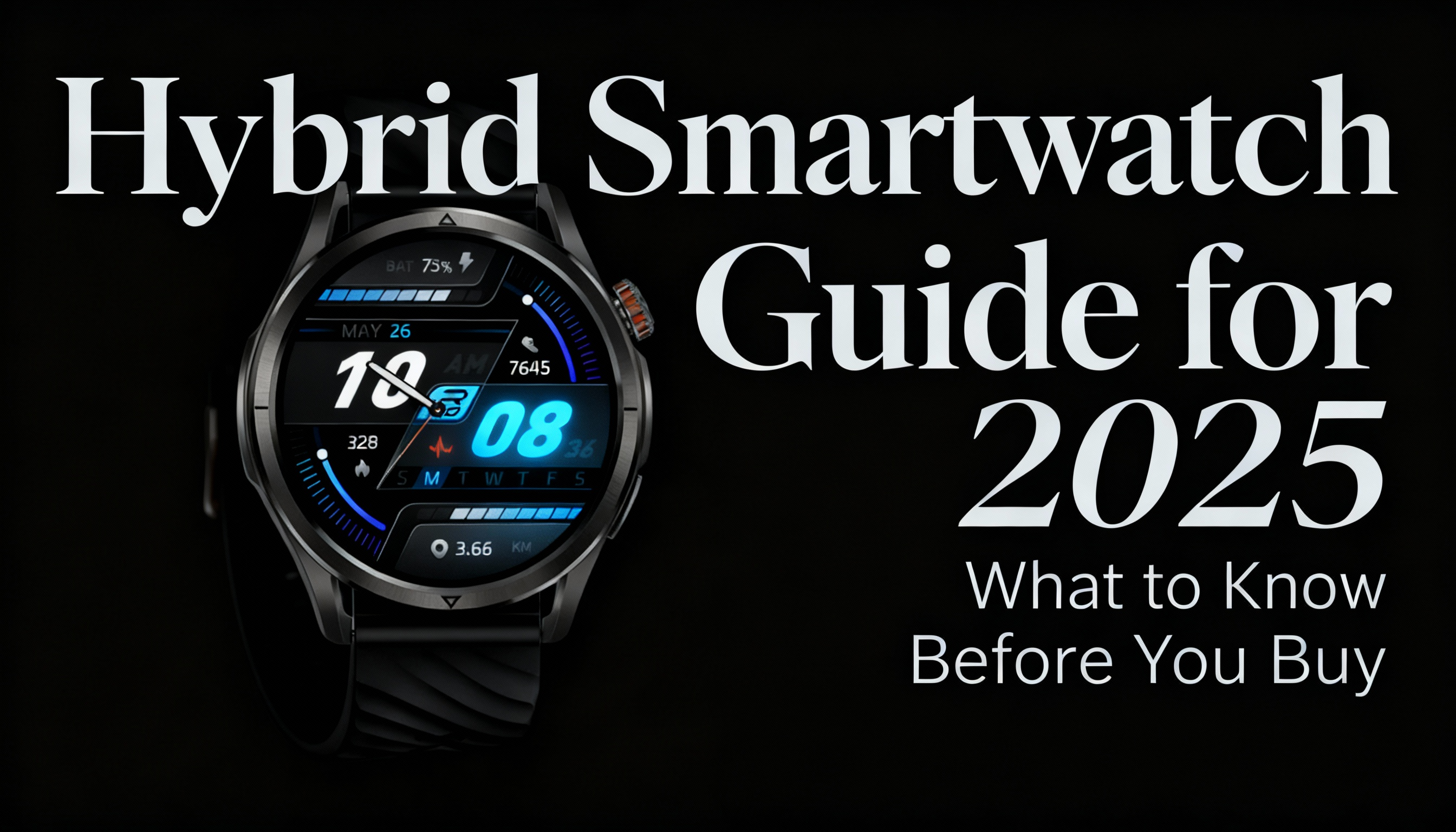For serious hiking, gear failure isn’t just inconvenient—it can be dangerous. A smartwatch with long battery life ensures your GPS, maps, and safety tools stay active when you need them most.We’ll break down what hikers should really look for, and which models actually deliver in the wild.

Why Battery Life Is the Most Critical Feature in a Hiking Smartwatch

For most smartwatch users, a day or two of battery life is enough. But for hikers, especially those venturing off-grid or trekking for days, this simply won’t do.
A smartwatch running out of power mid-hike isn’t just inconvenient—it can mean losing GPS access, navigation routes, and emergency tracking tools when you need them most.
Long threads on BackpackingLight and Reddit consistently reflect this. One hiker on r/smartwatch mentioned switching from a WearOS device to a Garmin Instinct Solar after experiencing less than 7 hours of GPS time on a forest trail.
“After that trip, I knew battery life had to come first,” they wrote.
This sentiment is echoed by dozens of users who report choosing function over flash when shopping for trail-ready wearables.
No matter how advanced a watch is, it’s useless if it doesn’t last the hike.
What Hikers Need to Know About Smartwatch Battery Life
Manufacturers typically advertise best-case scenarios: 14 days in smartwatch mode, 40 hours with GPS, hundreds of hours in power-saving modes. But these claims rarely match what hikers see in the field.
Factors that drain battery quickly include:
- Continuous GPS usage
- Always-on displays and bright backlighting
- Active sensors like: heart rate, SpO₂, altimeter
- Frequent Bluetooth syncing or mobile notifications
A Redditor on a Camino de Santiago prep forum noted that their Suunto Vertical, advertised for 60 hours of GPS time, lasted roughly 42 hours over several days of trail use. “Still solid, but definitely not the full claim,” they said.
These variances aren’t unusual—GPS mode battery often runs 20–30% lower than spec, especially when full accuracy settings are enabled.
Cold weather compounds the issue. Lithium-ion batteries lose efficiency in low temperatures, meaning even premium watches see diminished runtime during alpine treks.
Features That Matter in a Smartwatch with Long Battery Life
When selecting a hiking smartwatch, battery life is just the beginning. Equally important are rugged construction, reliable GPS functionality, and sensor control. These factors determine whether your device is trail-ready or just a fitness tracker with good marketing.
Ruggedness and Trail Durability
A hiking smartwatch must withstand impact, dust, water, and elevation changes. Premium options like the Garmin Instinct 2X Solar or Suunto 9 Baro meet military durability standards and have been field-tested across rugged terrain.
Budget options like the Kospet Tank M3 Ultra also offer impressive build quality, with IP69K waterproofing and reinforced casing—making it a solid entry-level choice for hikers focused more on durability than advanced features.
GPS Performance and Navigation
Full-featured navigation including offline maps, route planning, and backtracking—is available on higher-end models. These features are critical for hikers in unfamiliar or remote areas.
The Kospet Tank M3 Ultra, by contrast, includes basic GPS tracking suitable for distance and pace logging, but lacks in-depth navigation support. For first-time long-distance hikers, this trade-off can be acceptable, especially if supplemented with physical maps or a smartphone GPS app.
Sensor Suite and Battery Efficiency
High-end models offer customizable sensors, including heart rate, altimeter, barometer, and SpO₂, which can be selectively disabled to preserve power.
Minimalist options like the Kospet use fewer sensors, which in itself extends standby time. That makes them easier to manage for users not looking to monitor every biometric in real time.
Top Smartwatches with Long Battery Life for Hikers
Garmin Fenix 7X Solar
Battery Life: Up to 89 hours GPS / 37 days smartwatch
Strengths: Multi-band GPS, solar charging, topo maps, ABC sensors
User Note: One Redditor noted hiking for a week with GPS logging 4 hours per day, ending the trip with 30% battery left.
Suunto Vertical Titanium Solar
Battery Life: Up to 85 hours GPS / 60 days standby
Strengths: Excellent display in sunlight, strong offline navigation, solar assist
Forum Insight: A Suunto user on BackpackingLight said, “Battery exceeded expectations, even with full route navigation on the trail.”
Kospet Tank M3 Ultra
Battery Life: ~20 hours GPS / 50 days standby
Strengths: Budget-friendly, military-grade durability,rugged design
Frequently mentioned in smartwatch forums as a reliable basic tracker. One user noted, “It’s great for basic logging, but not built for full topo navigation.”
For hikers just starting to plan long-distance treks, the Kospet Tank M3 Ultra offers an impressive balance of endurance and durability at a fraction of the cost of high-end Garmin or Suunto models.
While it lacks features like advanced GPS mapping or detailed environmental sensors, it’s a strong contender for those prioritizing battery life over bells and whistles.
In short, it’s a cost-effective entry point into hiking smartwatches—especially for those who are new to multi-day outdoor adventures and don’t want to overspend on their first device.
Choosing the Right Hiking Watch for Your Needs
Every hiker’s situation is different, so the best smartwatch with long battery life depends on the demands of your hike.
Ask yourself:
What’s your average trip length?
Day hikers can get by with 20–30 hours GPS, but multi-day trekkers need 50+ hours or solar assist.
Do you need detailed maps or just route breadcrumbs?
Some watches support full topo maps, others only tracking lines.
How much are you using sensors?
If you track heart rate and SpO₂ 24/7, battery will suffer. Pick a model with customizable tracking.
Are you hiking in extreme temps?
Cold conditions cut battery life. Test your watch in-field or carry a battery bank as backup.
One Reddit hiker summed it up well: “You don’t need the fanciest watch—you need the one that works when you’re 20 miles from signal and 10 hours from shelter.”

Practical Tips to Extend Battery Life on the Trail
No matter what model you use, smart habits can stretch your battery significantly.
- Start hikes in power-saving GPS mode unless you need pinpoint accuracy
- Disable WiFi, Bluetooth, LTE, and always-on displays
- Reduce screen brightness and screen timeout duration
- Turn off unused sensors, like SpO₂ or temperature
- Use solar charging, if available, during breaks or sun exposure
- Keep the watch warm in cold environments to prevent voltage drops
- Use a small, trail-rated power bank to top up if needed
Most hikers can extend battery by 20–30% with these adjustments.
Conclusion
For hikers, choosing a smartwatch with long battery life isn’t a luxury—it’s a safety tool. While display quality and smart features are appealing, they don’t matter if your battery can’t make it through a full trail day.
With the right watch and smart battery management, your tech can last as long as your trek—and support you every step of the way.
FAQs
Why do I need a smartwatch with long battery life for hiking?
A smartwatch with long battery life is important for hiking because GPS tracking, heart rate monitoring, and outdoor navigation all consume a lot of power. If your battery dies halfway through the hike, you lose safety and fitness data.
How many days of battery life should a hiking smartwatch have?
For day hikes, at least 24–48 hours is fine. For multi-day hikes or camping, look for smartwatches with 7–15 days of normal use or 20+ hours in GPS mode. Some rugged models can last up to 30 days with power-saving features.
Which smartwatches with long battery life are best for hiking?
Popular options include:
- Garmin Instinct 2 Solar with up to 28 days battery life
- Amazfit T-Rex Ultra with up to 20 days
- KOSPET Tank T3 Ultra 2 with strong endurance and outdoor durability
- Garmin Fenix 7 with up to 18 days standard use










Leave a comment
This site is protected by hCaptcha and the hCaptcha Privacy Policy and Terms of Service apply.